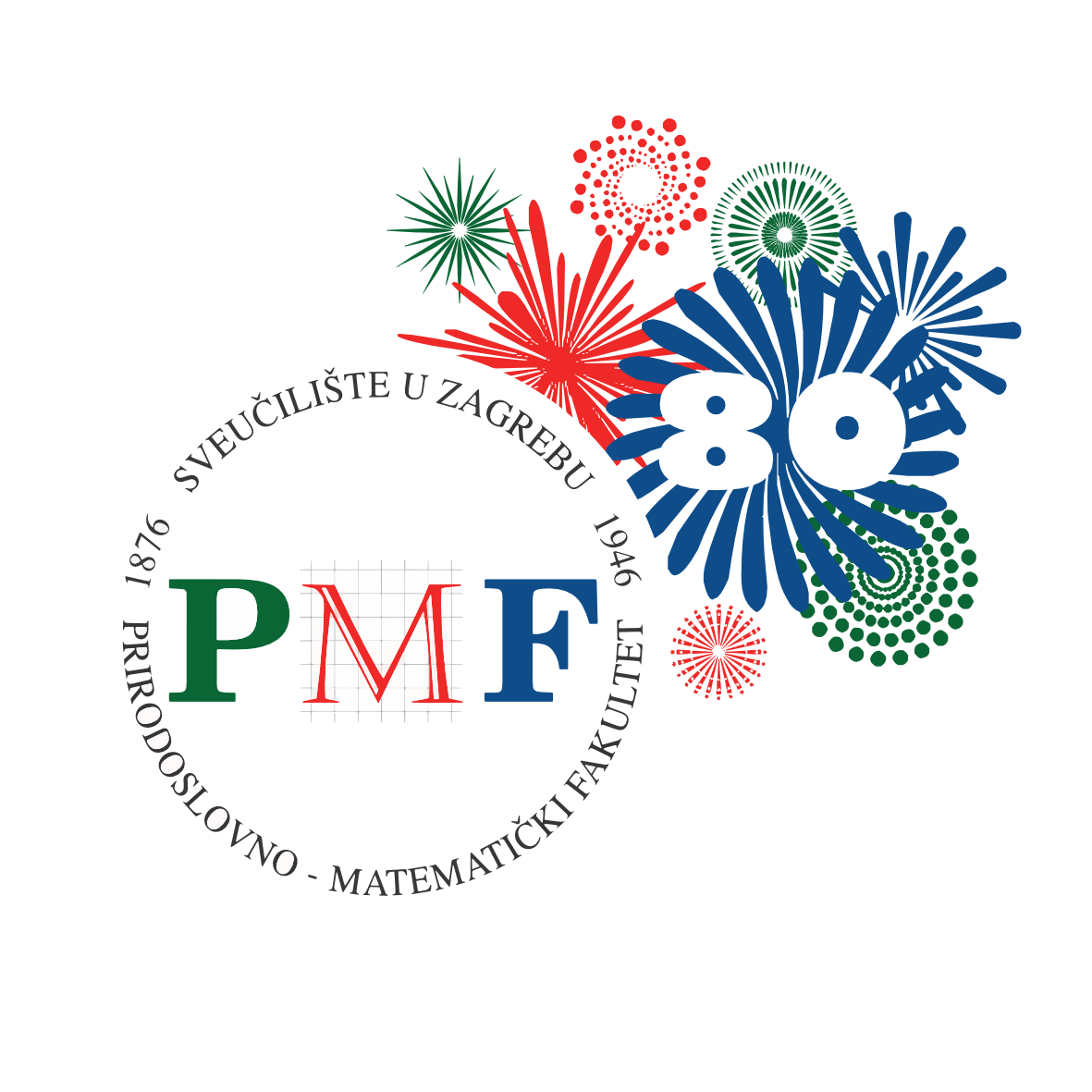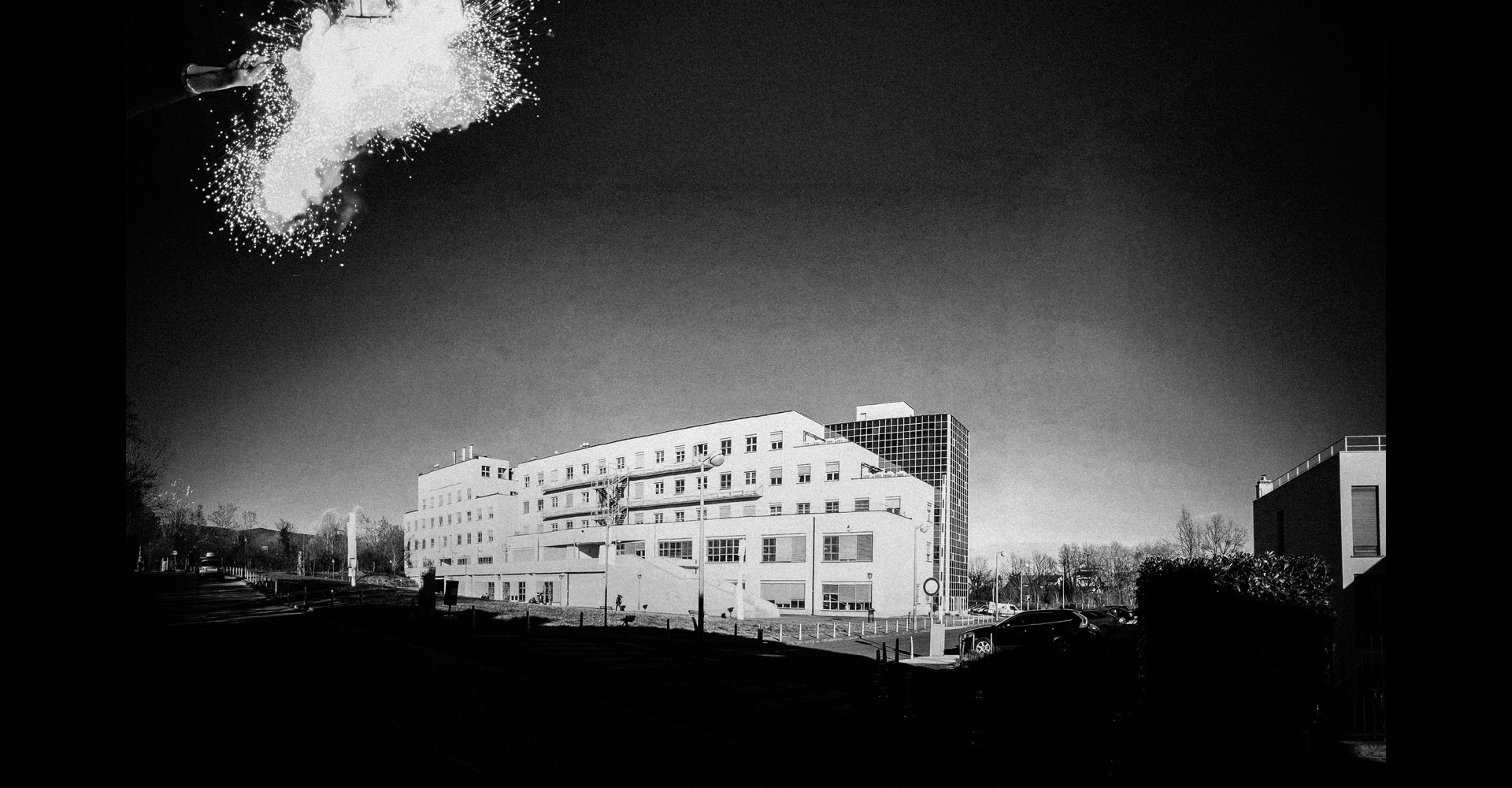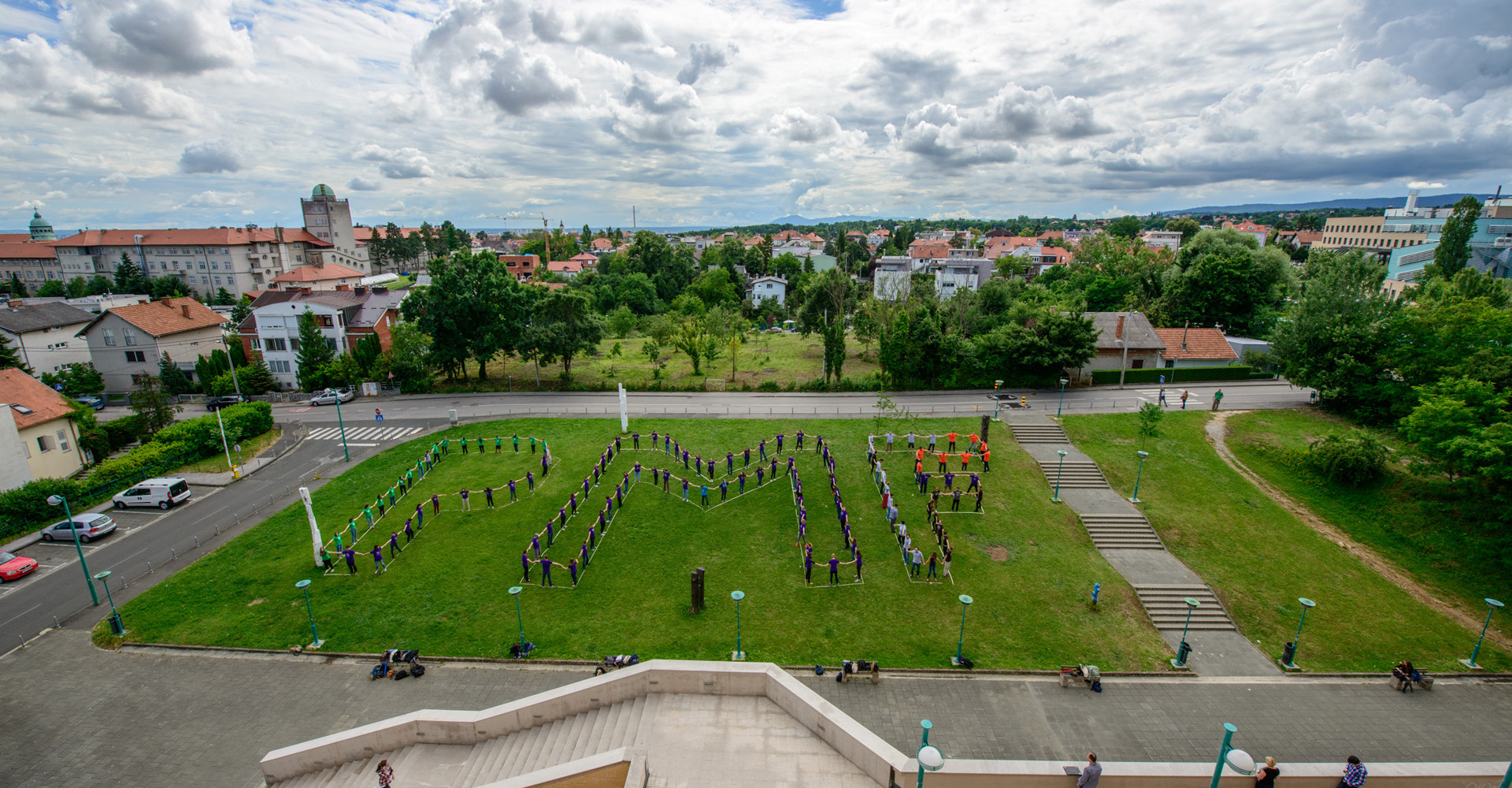Macromolecular complexes of aminoacyl-tRNA synthetases and their role in translational quality control and non-ribosomal peptide synthesis
Makromolekularni kompleksi aminoacil-tRNA-sintetaza i njihova uloga u kontroli ribosomske i neribosomske biosinteze proteina
Trajanje / Duration:
01. 12. 2007. - 30. 11. 2010.
Voditelj projekta / Project leader:
Dr. sc. Ivana Weygand-Đurašević, red. prof.
Su-voditelj projekta / Project co-leader:
Dr. sc. Nenad Ban, prof. (ETH Zürich, Švicarska)
Financiranje / Funding:
Fond "Jedinstvo uz pomoć znanja" / Unity Through Knowledge Fund
Ustanova - nositelj projekta / Administering institution:
Prirodoslovno-matematički fakultet, Sveučilište u Zagrebu
Partnerske ustanove / Partner institutions:
ETH Zürich, Institute of Molecular Biology and Biophysics
PLIVA Croatia Ltd. / Hospira d. o. o.
The Ohio State University, Department of Microbiology
Sažetak:
Aminoacil-tRNA-sintetaze (aaRS) su enzimi potrebni za biosintezu proteina u svim živim organizmima. Kataliziraju povezivanje transfer-RNA s njihovim pripadnim aminokiselinama, koje se potom polimeriziraju na ribosomima. Nova su istraživanja pokazala da se specifičnost i djelotvornost ovih enzima mijenja pri interakciji s drugim staničnim proteinima. Glavni ciljevi projekta su: i) razjasniti način formiranja i ulogu makromolekularnih kompleksa seril-tRNA-sintetaza pri ribosomskoj biosintezi proteina; ii) ispitati eventualno učešće seril-tRNA-sintetaza i/ili njima srodnih enzma u neribosomskoj sintezi peptida. Istražiivanja se provode kombinacijom biokemijskih i kristalografskih metoda. Od potencijalnog su farmakološkog značaja, jer se neke sintetaze mogu učinkovito i specifično inhibirati, te su zanimljive mete za djelovanje antibiotika, a neke pak sudjeluju u neribosomskoj sintezi različitih prirodnih produkata.
Abstract:
Aminoacyl-tRNA synthetases (aaRS) are key enzymes in translation of genetic message, which catalyze esterification of transfer RNAs with their cognate amino acids. The synthetases are highly specific, but errors in amino acid and tRNA selection are occasionaly made and they interfere with accurate protein synthesis. The fidelity of protein synthesis is maintained by editing activities of synthetases, which remove noncognate amino acids from tRNAs before they are delivered to the ribosome. In some cases editing activity is provided by the association of synthetases with freestanding trans-acting proteins. Alternatively, formation of aaRS-macromolecular complexes, either with cognate tRNA or auxiliary noncatalytic proteins, can improve the quality of aminoacyl-tRNA synthesis by enhancing the selectivity of aaRS. The objective of this proposal is to study the role of macromolecular complexes of aaRSs in translational quality control. We will focus primarily on seryl-tRNA synthetases (SerRS). SerRS is phylogenetically intersting because there are two distinct serine-charging enzymes; a standard or bacterial-type SerRS found in the majority of organisms (prokaryotes, eukaryotes and archaea), and a highly diverged SerRS confined to the methanogenic archaea. We have previously shown that the accuracy and the efficiency of yeast SerRS is affected by complex formation with cognate tRNA, that enhances amino acid discrimination, and with a nonsynthetase protein, peroxin Pex21p, which stimulates the binding of cognate tRNA. The C-terminal extension, conserved in eukaryotic SerRSs, is absolutely required for maintaining the interaction between the two proteins. Further structural and biochemical studies are needed to elucidate the role of these complexes in translation and possibly in other cellular processes. Due to much higher occurrence of aaRSs macromolecular assemblies in higher eukaryotes, plant SerRSs will be addressed. Additionally, since both the structures and serylation mechanisms of methanogenic-type SerRSs are substantially different from those of bacterial-type counterparts, we will explore macromolecular associations of atypical methanogenic-type SerRSs. Although SerRS enzymes lack separate editing domains, some members of this family are capable of hydrolyzing non-cognate adenylates and may need aminoacylable tRNA as a cofactor. By using a series of structural tRNA variants, we will study the mechanism of tRNA-mediated editing in the confines of the synthetic site. Finally, our recent finding that some proteobacterial genomes comprise duplicated SerRS-like genes, raised our interest toward structural and functional characterization of these putative SerRS paralogs, which may be required for serine activation in non-ribosomal peptide synthesis. The research on both aminoacyl-tRNA synthetases and their paralogs has a potential for developing novel antibiotics.
Suradnici / Collaborators:
Dr. sc. Ita Gruić-Sovulj, izv. prof. (PMF)
Dr. sc. Jasmina Rokov Plavec, doc. (PMF)
Dr. sc. Silvija Bilokapić (PMF)
Dr. sc. Vlatka Godinić Mikulčić (PMF)
Dr. sc. Sonja Lesjak (PMF)
Dr. sc. Marko Močibob (PMF)
Dr. sc. Ana Crnković (PMF)
Mario Kekez, prof. biol. i kem. (PMF)
Dr. sc. Marija Luić, znanst. savjetnica (IRB)
Nives Ivić, dipl. ing. / prof. biol. kem. (IRB)
Dr. sc. Michael Ibba, Assc. Prof. (OSU)
Dr. sc. Tina (Čepo) Kusalić (PLIVA / Hospira d. o. o.)
Ivan Paškvan, dipl. ing. (PLIVA / Hospira d. o. o.)
Rezultati:
Na temelju strukturno-funkcionalne karakterizacije seril-tRNA-sintetaza (SerRS) iz metanogenih arheja razjašnjen je mehanizam djelovanja ovog ključnog enzima i postavljena je hipoteza o uključivanju arhealnih SerRS u multiproteinske komplekse (publikacije 1-5); studirani su inhibitori serilacije (rad broj 6). Detektiran je kompleks dviju aminoacil-tRNA-sintetaza kod metanogenih arheja, koji stvara interakcije i s nekoliko nesintetaznih proteina (rad broj 10). Studirani su uzroci toksičnih efekata pri nagomilavanju arhealnih SerRS u bakteriji (rad broj 7). Kratki revijalni članak s komentarima o upotrebi kodona pri translaciji objavljen je u časopisu Science (rad broj 9). Otkrivena je nova grupa neobičnih, seril-tRNA-sintetazama sličnih enzima (homologa SerRS) koji aktiviraju aminokiseline, ali ih ne prenose na tRNA, već na fosfopanteteinsku prostetičku skupinu malih proteina, koji vjerojatno sudjeluju u neribosomskoj sintezi peptida. Riješena je prostorna struktura i razjašnjen je način djelovanja jednog homologa SerRS (rad broj 8 i 11). Naši najnoviji rezultati opisuju način njegove interakcije (makromolekularni kompleks) s jednim od proteina iz neribosomskog biosintetskog puta.
Aktivnosti:
- 20 posterskih priopćenja i/ili predavanja na znanstvenim skupovima.
- Obranjene su tri doktorske disertacije izravno vezane uz problematiku projekta (J. Jarić, M. Močibob i V. Godinić Mikulčić) i pet diplomskih radova.
- V. Godinić Mikulčić, M. Močibob i A. Crnković su u više navrata boravili u inozemnim suradnim institucijama radi izvođenja dijelova projekta.
- U siječnju 2009. godine nabavljen je novi kromatografski uređaj AKTApurifier 10, koji je najvećim dijelom financiran sredstvima projekta, dok je godine 2010. sufinancirana nabava čitača mikrotitracijskih pločica. Tijekom projekta je nabavljeno i nekoliko manjih laboratorijskih uređaja (stolnih centrifuga, kupelji, koncentratora).
Publikacije:
- Bilokapic, S., Rokov Plavec, J., Ban, N. and Weygand-Durasevic, I. (2008) Structural flexibility of the methanogenic-type seryl-tRNA synthetase active site and its implication for specific substrate recognition, FEBS J. 275, 2831-2844.
- Bilokapic, S., Ivic, N, Godinic Mikulcic, V., Piantanida, I., Ban, N. and Weygand-Durasevic, I. (2009) Idiosyncratic helix-turn-helix motif in Methanosarcina barkeri seryl-tRNA synthetase has a critical architectural role, J. Biol. Chem. 284, 10706-10713.
- Lesjak, S. and Weygand-Durasevic, I. (2009) Recognition between tRNASer and archaeal seryl-tRNA synthetases monitored by suppression of bacterial amber mutations, FEMS Lett. 294, 11-118.
- Bilokapic, S., Ban, N., and Weygand-Durasevic, I. (2009). Seryl-tRNA synthetases: enzymes with multiple personalities, Croatica Chem. Acta 82, 51-59.
- Jaric, J., Bilokapic, S., Lesjak, S., Crnkovic, A., Ban, N., and Weygand-Durasevic, I. (2009) Identification of amino acids in the N-terminal domain of atypical methanogenic-type seryl-tRNA synthetase critical for tRNA recognition, J. Biol. Chem. 284, 30643-30651.
- Gruic-Sovulj, I., Dulic, M., Jaric, J., Cvetesic, N., Majsec, K., and Weygand-Durasevic, I. (2010) Efficiently activated serine analogue is not transferred to yeast tRNASer, Croatica Chem. Acta 83, 163-169.
- Lesjak, S., Boko, D., and Weygand-Durasevic, I. (2010) Seryl-tRNA synthetases from methanogenic archaea: suppression of bacterial amber mutation and heterologous toxicity, Food Technol. Biotechnol. 48, 512-518.
- Mocibob, M., Ivic, N., Bilokapic, S., Maier, T, Luic, M., Ban, N., and Weygand-Durasevic, I. (2010) Homologs of aminoacyl-tRNA synthetases acylate carrier proteins and provide a link between ribosomal and nonribosomal peptide synthesis, Proc. Natl. Acad. Sci. U.S.A. 107, 14585-14590.
- Weygand-Durasevic, I. and Ibba, M. (2010) New roles for codon usage, Science 329, 1473-1474.
- Godinic-Mikulcic, V., Jaric, J., Hausmann, C. D., Ibba, M. and Weygand-Durasevic, I. (2011) An archaeal tRNA-synthetase complex that enhances aminoacylation under extreme conditions, J. Biol. Chem. in press, doi: 10.1074/jbc.M110.168526.
- Mocibob, M., Ivic, N., Subasic, D., Luic, M. and Weygand-Durasevic, I. (2011) Substrate recognition by novel family of amino acid:[carrier protein] ligases, submitted
Predavanja:
Weygand-Đurašević, I.
The many faces of serine activating enzymes in protein biosynthesis // 5th Central European Conference "Chemistry toward biology", Primošten, 2010. (pozvano predavanje)
Močibob, M., Ivić, N., Bilokapić, S., Maier, T., Luić, M., Ban, N, Weygand-Đurašević, I.
Homologs of class II aminoacyl-tRNA synthetases: a possible link between protein synthesis and non-ribosomal peptide synthesis // 23rd tRNA Workshop: From origin of life to biomedicine, Aveiro, Portugal, 2010. (predavanje)
Weygand-Đurašević, I.
Architectural role of idiosyncratic helix-turn-helix motif in methanogenic type seryl-tRNA synthetase // BIT's 3rd Annual Protein and peptide Conference (Pep-2010), Peking, 2010. (pozvano predavanje)
Gruić-Sovulj, I.
Aminoacyl-tRNA synthetases: accuracy of substrate recognition and catalysis // XXI. hrvatski skup kemičara i kemijskih inženjera, Trogir, 2009. (pozvano predavanje)
Weygand-Đurašević, I.
The role of aminoacyl-tRNA synthetases in the evolution of genetic code: Distinct evolutionary origins of seryl-tRNA synthetases // Simpozij o Darwinu, Hrvatska Akademija znanosti i umjetnosti, Zagreb, 2009. (pozvano predavanje).
Godinić, V., Jarić, J., Ibba, M., Weygand-Đurasević, I.
Biochemical insight into the complex of arginyl- and seryl-tRNA synthetases in methanogenic archaea // aaRS2008: International conference on aminoacyl-tRNA synthetases; from basic mechanisms to system biology. Veyrier du Lac, France, 2008. (predavanje)
Jarić, J., Bilokapić, S., Crnković, A., Lesjak, S., Ban, N., Weygand-Durasevic, I.
The role of N-terminal domain of seryl-tRNA synthetase from Methanosarcina barkeri in tRNA binding // Congress of the Croatian Society of Biochemistry and Molecular Biology with international participation, Osijek, 2008. (predavanje).
Močibob, M., Ivić, N., Luić, M., Weygand-Đurašević, I.
Seril-tRNA-sintetaze iz metanogenih arheja i njihovi eubakterijski homolozi // 50 godina molekularne biologije u Hrvatskoj , Zagreb, 2008. (predavanje)
Weygand-Đurašević, I.
Kratki prikaz UKF projekta 1B 10/07 u Hrvatskoj gospodarskoj komori, Zagreb, 1. srpanj 2008.

 Pristupačnost
Pristupačnost




